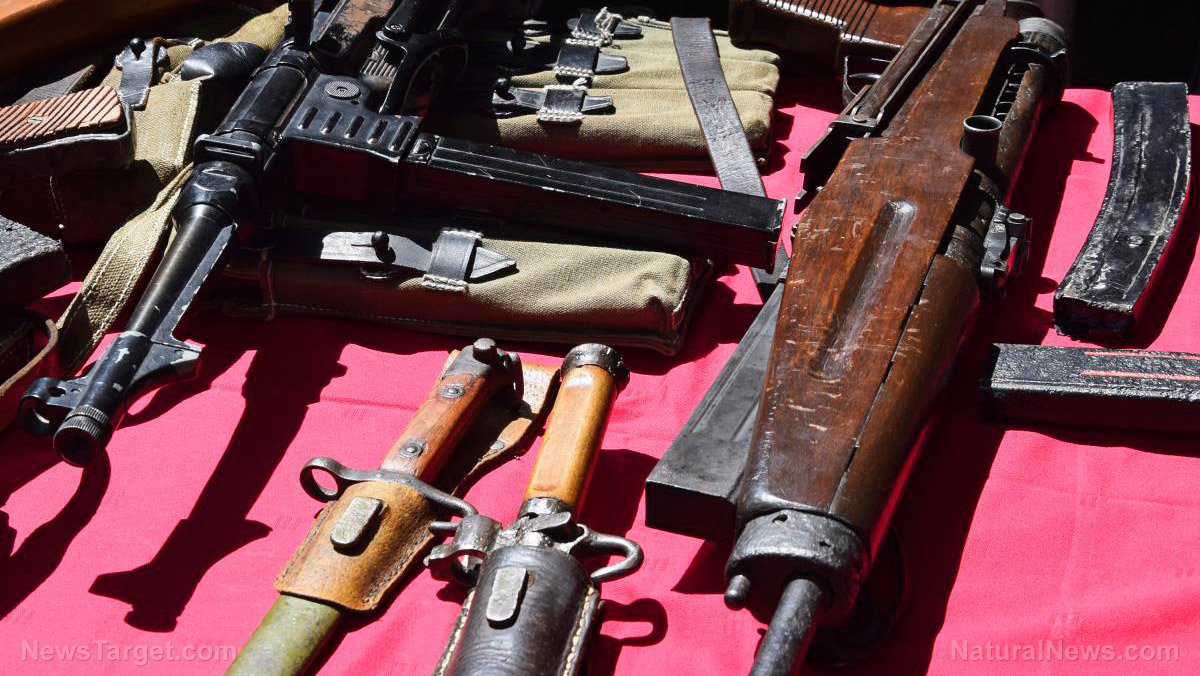
Whether it's to hunt at longer ranges or just have more stopping power to fend off larger animals, some preppers may be thinking of opting for an AR-10 clone over an AR-15. Both firearms share enough similarities that anyone familiar with the latter won't have trouble with the former.
That said, there are substantial differences between an AR-10 and AR-15 that trying to build the latter may not be as easy as building the former. As such, anyone hoping to go for the larger caliber rifle should educate himself first on these differences. (h/t to BeansBulletsBandagesAndYou.com)
AR-10 vs. AR-15
The AR-10 is a battle rifle chambered for the NATO 7.62x51mm and its equivalent .308 Winchester cartridge. The rifle was originally intended as a competitor to the Springfield Armory T44 rifle and the Fabrique Nationale FAL for the chance to become the U.S. Army's M14 battle rifle. While the gun lost that competition to the T44, its basic design, including the then innovative straight-line barrel/stock layout, was later reused for the AR-15, which would enter Army service as the M16.
In creating the AR-15, ArmaLite, and later Colt (to whom ArmaLite sold the rights), made a number of changes to the AR-10. The most obvious of these is the resized barrel and magazine well to accept the smaller 5.56x45 (and compatible .223 Remington) rounds. However, these changes brought a host of other smaller changes, meaning that most AR-15 parts aren't compatible with AR-10s, and builds of the latter will need parts specific to it.
Picking the right parts
The good news is that, just like the AR-15, numerous companies have also made parts for the AR-10, making it easy to make a clone. However, due to the fact that AR-10 clones aren't as popular as AR-15s, the parts for the former can cost a lot more. For example, AR-10 lower receivers can go for as high as $400 compared to $90 for the equivalent AR-15 lower receiver.
Speaking of the lower receiver, preppers looking to build an AR-10 will have to put some consideration to the type of magazine that they'll be using when building their AR-10 clone. Most lower receivers for AR-10 clones use a magazine well that fits modern polymer magazines such as the Magpul PMAG. However, the original AR-10s use the magazine from the M14s civilian version, the M1A. With this in mind, preppers should consider what type of magazine they'll be using when picking a lower receiver for their AR-10.
The kind of lower receiver will also dictate the kind of vise block needed to assemble the gun. A vise block is simply a thick piece of plastic used to hold the lower receiver in a vice during assembly. However, as this fits through the magazine well, only the correct size of vise block will fit.
While parts like the lower receiver, upper receiver and barrel are understandably unique to the AR-10 due to the larger round, some parts that look like they can be interchanged between the AR-10 and AR-15 actually cannot. One such example is the stock. While the AR-10 and AR-15 stocks look the same on the surface, they have a different buffer and buffer springs. In addition, AR-15 grips with a beavertail won't fit as the curvature behind the grips are not the same on both rifles. Those without beavertails, on the other hand, should be just fine.
Check what the state allows
One other consideration is whether or not certain parts are legal in certain states. For example, folding stocks are illegal in states like Texas and New Jersey. The latter also doesn't allow flash hiders, so preppers must use a muzzle brake at the end of their barrels instead. Other things to consider include what size magazine is allowed before the rifle becomes considered an assault weapon.
The other legal issue to consider involves what the state allows in terms of actually carrying the rifle. Most states allow some form of open carry of unconcealed firearms. However, not all allow these for rifles and other long guns. This includes whether or not a permit is required. For example, some states like Connecticut and Georgia allow the open carry of long guns without a permit (with the exception of some localities).
Get help from a gunsmith
While some may balk at the idea for DIY build, getting help from a gunsmith is a good idea. For one, a gunsmith is bound to be much more familiar with the local and state laws regarding what and what isn't legal to put on a firearm.
More importantly, a gunsmith can provide advice and generally keep a prepper from making any expensive mistakes when building their clones. Trying to fix any problems that may arise during assembly without the proper skills, tools and knowledge lead to costly setbacks, especially if the parts in question get ruined in the process. Additionally, a gunsmith may even know how to get better parts at lower costs, saving a bit more money.
At the end of the day, assembling an AR-10 clone is no more difficult than assembling an AR-15 clone. The main obstacles are the cost of the parts, as well as getting the correct parts for a specific build. However, as long as preppers play it smart and make sure they have all the correct resources, they shouldn't have any problem building one.
Sources include:
BeansBulletsBandagesAndYou.com
Please contact us for more information.














